The resolution of a projector makes a huge difference to the picture quality and hence to just how immersive and impressive your viewing experience will be. So, you will want to know about the FHD vs. UHD and FHD vs. 4k comparisons to get the maximum value from your projection unit.
The global market share of projectors is expected to burgeon to approximately $9 billion by 2025. Assuming a correlation between the global demand for 3d projectors and the global market share of projectors in general, it can be seen that FHD projectors will continue to dominate the market with a share of around 40%-45%.
The projected growth rate for 4K 3D projectors seems modest at a bit shy of 20%. But, reports specific to the market size of 4K projectors, in general, suggest that overall there has been a significant rise in the demand for 4K UHD projectors the world over, particularly from residential users.
In terms of price, you will likely pay twice as much for a UHD projector as an FHD unit, which leads to the following questions, what is FHD and what is UHD, and above all does the performance improvement justify the higher cost? Continue reading to find out...
The Display Resolution Terms That You Need To Know About
These display terms literally refer to the number of pixels (i.e. horizontal and vertical) that the projection unit uses to display an image. As you may have guessed, higher is indeed better because for starters it gets you greater color saturation and illumination performance.
But, that's not where it stops. A higher resolution also offers excellent image clarity and quality even when a particular section of the image is blown up or if you are sitting too close to the screen.
What is FHD?
FHD or Full High Definition is an upgrade on HD resolution which offered a mere 720p. FHD brings 1920 (horizontal) x 1080 pixels (vertical) to the table. That's 2,073,600 total pixels across your screen or 2.07 megapixels.
At this time, most television content, digital media, movies and even sports relays and other video content has FHD resolution. So, if you are shopping on a budget or if peak resolution isn't the most important factor, an FHD unit will leave you impressed.
Also, this resolution is ideal for 16:9 aspect ratio. Nearly all cable feeds and even streaming content is made to be broadcasted at this aspect ratio.
Now, it is important to not confuse HD ready with FHD. The former still only gets you a mere 1280 X 720 pixels. This may not seem like a huge difference if you are viewing the content on a 21-25 inch screen. But, go to 45 inches and more and the difference will be apparent, particularly if you sitting a mere 3-4 feet from the screen.
So, you can imagine the degradation in image quality when you increase the screen size to 60-100 inches. And since you probably intend to go to that screen size if you are opting for a projector over a TV, FHD is your best bet.
Moreover, the “p" in 1080p does not stand for pixels. So, 1080i is not the same as FHD 1080p. The alphabet "i" stands for interlaced while "p" stands for progressive. These are methods followed by the unit to scan the pixels.
In progressive scanning a sequential order is followed to scan the pixel rows while in interlaced scanning, the pixel rows are scanned in an alternate order. Interlaced scanning is prone to causing motion blurring, so it is only suited for small TV screens and low-speed media.
What is UHD?
Think of UHD or Ultra High definition as a serious upgrade on not just HD but also FHD. UHD gets you 3840 pixels vertical and 2160 pixels horizontal or 8.3 megapixels across the screen. If you notice that's an uptick of 4 times in the total pixel count and an increase of two times horizontally and vertically.
Also, like FHD, UHD is designed to offer optimal performance at an aspect ratio of 16:9 even when you are sitting darn close to the screen.
While the use of FHD remains widespread, an increasing number of broadcasters and media makers are moving to UHD and even 4K (more on that in the next section). In fact, most streaming channels like Netflix, Amazon Prime, and Disney+ offer their content in 4K resolution
Moreover, since display technology is all pegged to move up to 8K, you can be sure that an increasing number of content creators will move to UHD and 4K in the near future. Since the difference between UHD and 4K isn't significant and it is possible to get a projector that is 4K UHD (projected 4K resolution), buying a 4K UHD unit is the best way to future-proof your investment in your home theater setup.
What is 4K?

A 4K projector pushes things higher a few notches in terms of total pixels. While you still get 2160 pixels vertically, the horizontal pixels go up from 3840 pixels to 4096 pixels. That gets you a total of 8.8 megapixels across the screen.
Now, you are bound to wonder if the increase of just 256 pixels in one direction will make that much of a difference.
Well, the answer to that is - Yes, but it depends on the screen size, your angle from the center of the screen, the brightness of the projection unit, and of course your viewing distance from the screen.
Another thing to consider is that when many manufacturers say 4K they are talking about native resolution or what they call True 4K. That is the actual pixels on the DLP chip or LCD panel.
But, this is the day and age of pixel shifting, which means that a native 3840 X 2160 chip (UHD) is capable of delivering the lofty 4K performance when required.
In fact, the technology behind 4K UHD is very similar to how the human eyes work. Instead of taking in all the details at once, your eyes basically vibrate back and forth in microseconds to take in the details of an image.
So, more often than not the image quality of a 4K UHD projector comes across as better than that of a True 4K projector. Of course, this does not mean that native 4K resolution has no applications.
The increase in the number of horizontal pixels means improved image quality even at greater widths. Hence, these are better suited to commercial applications like cinema halls that call for the use of 16-20 feet wide screens.
READ MORE: Is It Worth Buying a 4K Movie Projector?
FHD vs UHD vs 4K: Key Differences

As mentioned above, contrast ratio, brightness, viewing distance, and screen size all contribute to the image quality of a projector, be it FHD or UHD. For instance, if you are opting for a 4K UHD projector, you will need a unit that has a high contrast ratio, something in the vicinity of 3000:1.
After all, what would be the sense of the additional pixels if the projector is not capable of displaying black at its darkest and white at its brightest? It's the combination of these two factors that ultimately lead to extraordinary image quality and a true-to-life feel that allows you to see exactly what the content creator saw when capturing an image.
Similarly, the extra pixels won't make much of a difference if the image isn't bright enough. Of all visual aspects, your eyes will focus on brightness first and the most. So, even if the color accuracy is good and as is the color saturation, without the optimal brightness, the image quality will still seem subpar to you.
That said, assuming that these factors are held constant and you are starting with a screen size of 100 inches, this is how these resolutions will fare:
1- The comparison of pixel counts and what it means for viewers: When you move up from 720p to 1080p (FHD), you already do away with the notorious pixelation problem even when you take the screen size to 100 plus inches.
However, the details will be compromised if you are sitting very close to the screen, not that you should be doing that in the first place. But, assume a distance of just 7-10 feet from the screen, and you will find that the higher pixel count of a 4k UHD projector will lead to greater color accuracy and color saturation, particularly when the image includes shade-related detailing.
For instance, think of the image of a sunset, an FHD projector will show you the orange-pink clouds juxtaposed against a blue-going-to-purple twilight sky. Of course, that will be breathtaking enough if you have only ever watched this image on an HD screen.
But, a 4K UHD projector will hit the ball out of the park showing you every shade of orange and pink that stands out against the background of the blue-purple sky which is going from its brightest around the sun and towards the horizon to its darkest away from it. In other words, this is exactly what your eyes would see if you were actually at the scene, in fact, better!
So, while the performance of FHD is certainly good, it still lags behind the excellent image quality of a 4K UHD projector. But then, that is the tradeoff when you don't want to pay a few thousand dollars for a projector.
2- The difference in picture clarity and detail: Now imagine a brilliantly colored Macaw on your screen. With Full HD, you will be able to see the brilliant blue tone of its wings and back contrasting with the gorgeous yellow of its neck and body and also the black detailing around the eyes with the black beak and neck.
But, what you won't see are the hair that make up each individual feather on those wings or the gray-purple highlights on the blue feathers or even how the black detailing around the bird's eyes are actually stripes.
In other words, while FHD delivers impressive image clarity, the performance of a 4K HD projector in terms of image crispness and clear detailing is nothing short of phenomenal. It's not just like you actually being there, it's more like you watching the whole thing under magnification and with superlative clarity to boot.
Now, superior image clarity and crispness may not make a profound difference when it comes to regular media. But, if you are enjoying static images or media with a lot of components or even fast-moving images and zoomed sections, this clarity can have a significant impact on your viewing experience.
Of course, it also goes without saying that the more detailed the image, the more immersive will be your viewing experience and far more enjoyable too.
3- Impact on multimedia consumption and gaming: Once again, it's worth mentioning that the image clarity and quality of an FHD projector is really good. But, when it comes to UHD first-person shooter games, a 4K UHD projector will do more justice to them.
Similarly, think of fast-moving media like the Fast and Furious franchise, all those car chases will appear as awe-inspiring as they did in the movie theater if you have a 4K UHD projector displaying them. But, not all movies are Fast and the Furious or even Avatar.
For a rerun of "Friends" or even "How I met your Father", an FHD projector will do an exceptional job at a third of the cost. Also, if you intend to use the projector on the go or if it is supposed to be used at home and at work, an FHD unit will be good because they are available in portable forms. So, they can be carried around with ease and call for minimal setup.
On the other hand, if your presentations are usually meant for a large audience size. And if they call for the use of a big screen, something around 150 inches, and you want superior detailing, a 4K UHD projector will be a worthy investment.
WEMAX Projector - Fulfilling All Your Projection Needs
No matter what your budget or your choice of resolution, WEMAX has the right projector for you. A pioneer in the home theater projection market, WEMAX has managed to harness the full power of DLP projection technology by combining it with LED and ALDP light sources.
Together these technologies offer unmatched picture quality and color accuracy along with an exceptionally high contrast ratio. Take a look at two of their bestselling, top-of-the-line projectors:
WEMAX Dice - Your Ideal Full HD Projector

When you are shopping on a budget but still expect impressive performance, the uniquely shaped WEMAX DICE will live up to all your expectations and then some.
Brilliant Display Resolution: To begin with, the DICE brings along the brightness of 1680 LED Lumens, which translates to 700 ANSI lumens on the screen thanks to its 4-channel LED.
That is bright enough for superlative projection performance not just indoors but also outdoors. In fact, that's brighter than nearly all its competitors which are powered by regular LED bulbs.
Furthermore, this brightness is coupled with its FHD display performance and 1080p resolution that supports 4K. This means that media created in 4K resolution will look almost as good as it would on a 4K UHD projector.
In fact, the combination of that brightness and resolution is enough to deliver banging picture quality even with a 120-inch screen size.
Sleek & Eye-Catching Design: A truly powerful unit, the sleek design and unique cuboid shape of the DICE make it look like a gadget from the future. It weighs all of 2.2 kg and comes with a leather handle for easy storage and portability.
In fact, with its eye-catching shape and sober grey color, if you were to place it on the credenza or the console, it will look like a piece of modern art. But, make no mistake this robust and solid unit is built to go places. So, it is not just a high-quality projector but also doubles as a power bank. How's that for peak functionality?
Multi-Device Connectivity: WEMAX DICE is built to support every device that you want to hook it to. So, for your Blu-ray player, it's got an HDMI slot and a USB 2.0 port for all the media you have on a drive. Plus, it has Chromecast which allows you to stream content from your streaming devices.
It comes with a built-in 10W Dolby speaker but if you want to add to the sound output, the Bluetooth Compatible Dice allows you to do so wirelessly.
In a nutshell, this is the device for you if convenience ranks high on your list of priorities along with quality performance and high functionality.
READ MORE: Customizing Your Home Screen with Wemax Dice
WEMAX Nova - Mastering FHD and 4K Projection Excellence

If you are looking for a high-end projector that over-delivers on all fronts and you do not mind paying for exceptional quality, then WEMAX Nova will be the best pick.
Superior 4K UHD: In terms of performance, the Nova remains unmatched with its combination of DLP technology and high-intensity ALDP light source. Together these two bring you 2100 ANSI lumens of brightness and a resolution of 8.3 million pixels for an authentic cinema-grade viewing experience. Plus, you get a color spectrum of 1.07 billion colors coupled with a resolution of 3000:1.
If you are a stickler for details and top-notch quality, Nova will leave you enthralled with its outstanding performance. The image clarity of this unit is so striking that once you get used to watching your favorite shows and movies on the Nova, you will never go another way.
Ultra Short Throw: The best part of investing in the future-ready WEMAX Nova is that the superlative performance comes with hassle-free installation. Because the Nova is an ultra-short throw projector, a distance of a mere 5.5 inches from the screen gets you a projection size of a massive 80 inches, add just 4 inches to that, and at a distance of 9.1 inches will get you a screen size of 100 inches while you can get the highest projection area of 150 inches at just a bit over 19 inches.
Immersive Audio Experience: Buy a lesser projector and you will have to make a further investment in a sound bar or a home theater audio system. But, the makers of WEMAX Nova have thought of it all. This projector comes with an impressive integrated array of 4 speakers that have built-in Dolby along with DTS HD Coding. So, the audio experience offered by the Nova is just as immersive as the visual experience it offers.
And if you do need an extra punch, with its multi-device compatibility, you will have no trouble adding extras to your home entertainment setup. All in all, when you want the best and a compromise is not needed or if a one-time investment that will serve you for years is what interests you, the WEMAX Nova will be perfect for you.
READ MORE: WEMAX Nova: Best Alternatives to Optoma & VAVA 4k Projector
Frequently Asked Questions (FAQs)
1. Is UHD 4K?
UHD is slightly short of True 4K which gets you 8.8 megapixels across the screen as compared to the 8.3 megapixels offered by UHD. That said, a high-end projector like the WEMAX Nova will usually be 4K UHD, which basically means that while it falls a bit short of being True 4K, the pixel-shifting ability of the unit allows it to deliver a better 4K performance than even True 4K.
2. Which is better quality HD or UHD?
UHD is quite literally 3 generations ahead of HD in terms of pixel count. HD is a considerably older technology that eventually paved the path for 1080i and 1080 p (FHD). And 1080p eventually got upgraded to UHD or 2160p.
While HD offers 1,280 x 720 pixels or a bit lower than 1 megapixel, with UHD you get 3840 X 2160 pixels which is a total count of 8.3 megapixels. Undoubtedly, the performance of UHD is far superior to that of HD.
3. How much do UHD and 4K cost?
UHD projectors typically cost in the range of $2000 to $4000. Some big-name high-end true 4K projectors can even cost well over $5,000.
Wrapping It Up
FHD projectors are far from dead. But, most content creators are rushing to adopt the high-performance UHD and 4K standards. For one, the picture clarity and color vividness that 4K UHD offers makes viewing more pleasurable and the entire experience immersive to the point of it being addictive.
So, while FHD will continue to remain relevant in the immediate future, a 4k UHD projector is a future-ready unit that has a lot to offer today and tomorrow. That said, if this is your first projector or if you are held back by your budget, an FHD projector is the next best thing and certainly a huge improvement over any HD unit out there.
Related Blogs from WEMAX
5 Reasons To Choose Laser Projectors for Home Theater
Wemax Dice review: Quality and Portability in the Palm of Your Hand
The History and Evolution of Laser Projectors
Be the first to know the latest updates, tips, how-tos, exclusive deals, and discounts from WEMAX. Sign up for our newsletter today!


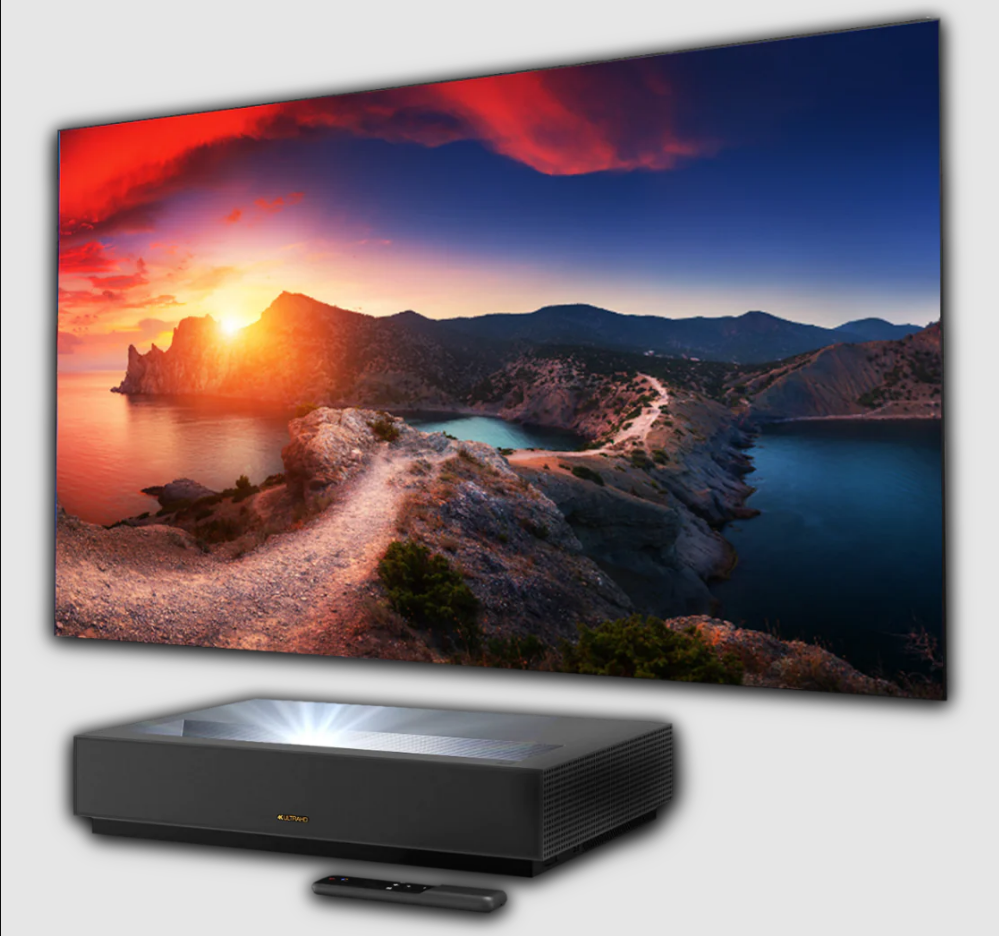
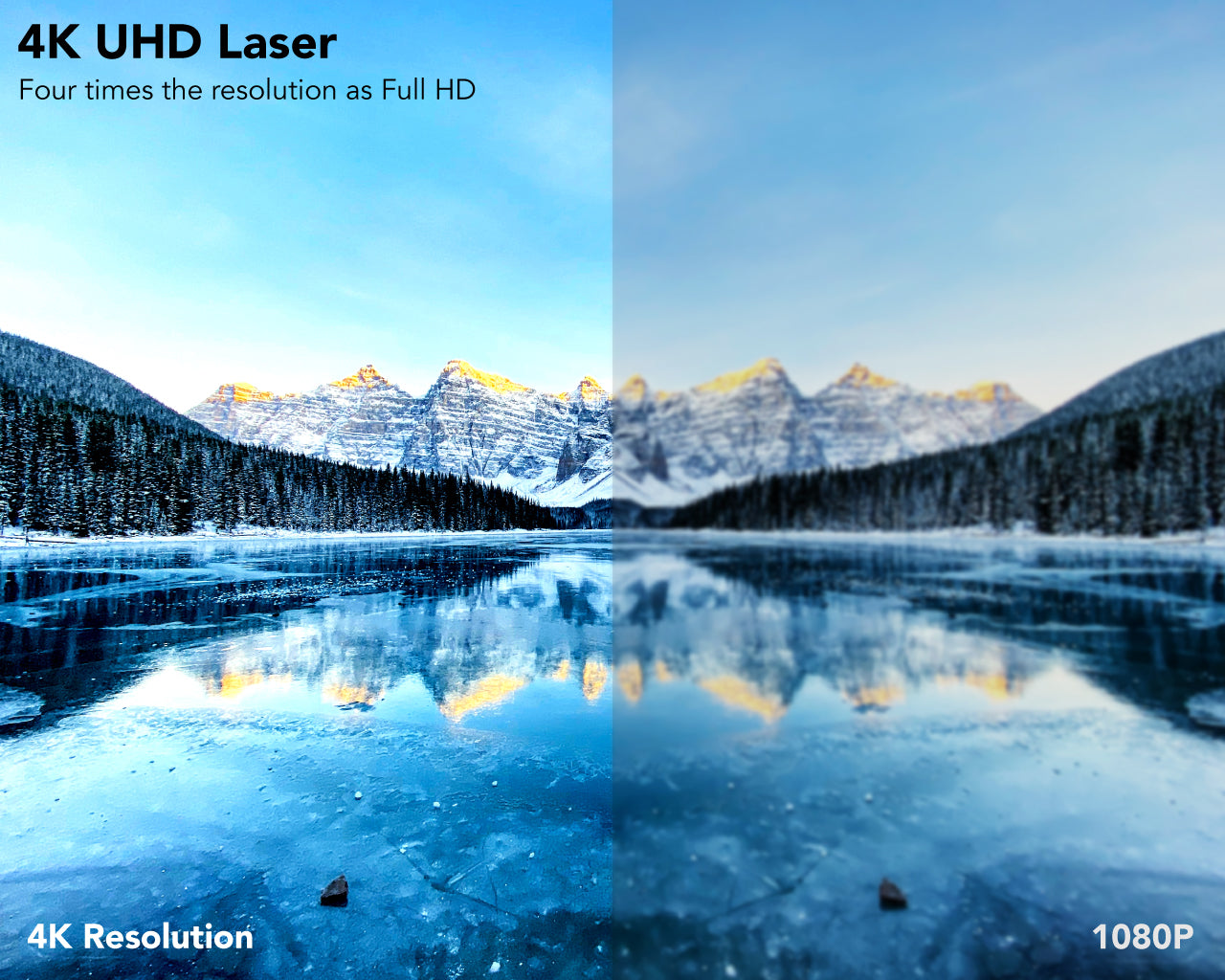
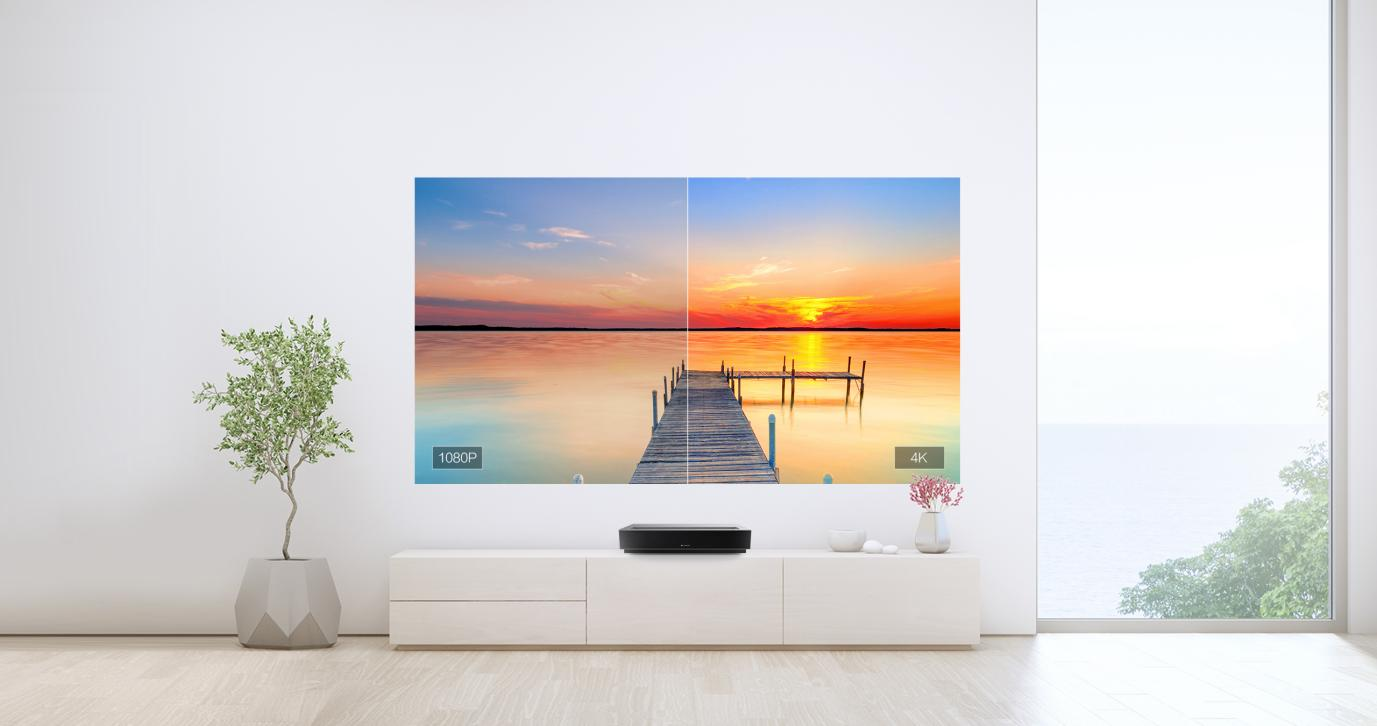
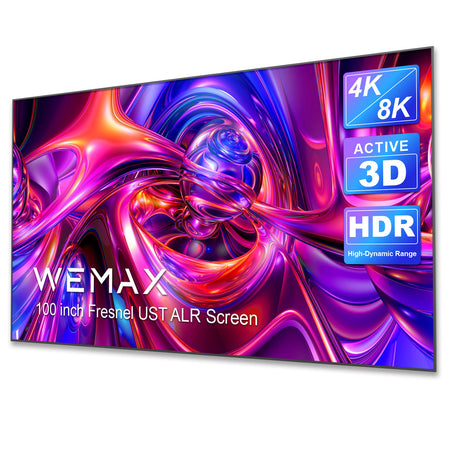
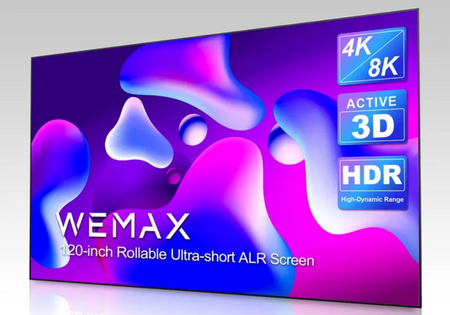
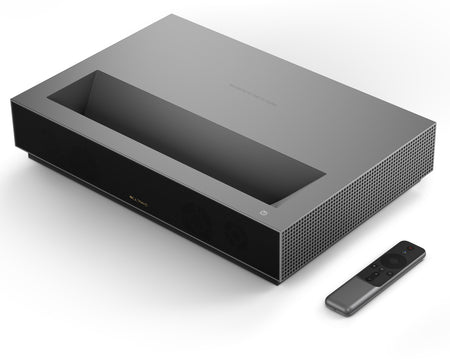
Comments (0)
Back to Tips and Tricks